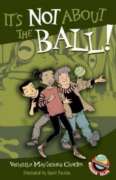With the intriguing idea of exploring what lies below the surface of the Earth as its broad theme, this fascinating book cleverly dices up the subject into small, more manageable pieces ready to be devoured by young readers, particularly boys. The basics are covered in detail, such as the physical properties of the Earth’s crust (including its unusual features such as volcanoes and caves), as well as animals with underground habitats.
International
Pay It Forward Kids

In Pay It Forward Kids, readers will meet ordinary kids from across North America who have done extraordinary things, all on their own initiatives. They have set out to “pay it forward” to someone else, with astonishing results. The ripple effect of their deeds have inspired others to join their causes, and in some cases, to start missions of their own.
Severn and the Day She Silenced the World

“We raised all the money ourselves to come six thousand miles to tell you adults you must change your ways.” So began Severn Suzuki’s speech to the international delegates at the 1992 Earth Summit in Rio De Janeiro. Only twelve years old, she was the only child given the chance to speak at the conference, and the media—and the world—took notice.
It’s Not About the Tiny Girl!

The series follows three friends who love to share stories. In each book, one is reminded of a well-known story: It’s Not About the Ball! is based on The Frog Prince; It’ Not About the Tiny Girl! is based on Thumbelina; It’s Not About the Diamonds! is based on the story of Diamonds and Toads; It’s Not About the Straw! is based on Rumpelstiltskin and It’s Not About the Beanstalk! is based on Jack and the Beanstalk.
It’s Not About the Straw!
The series follows three friends who love to share stories. In each book, one is reminded of a well-known story: It’s Not About the Ball! is based on The Frog Prince; It’ Not About the Tiny Girl! is based on Thumbelina; It’s Not About the Diamonds! is based on the story of Diamonds and Toads; It’s Not About the Straw! is based on Rumpelstiltskin and It’s Not About the Beanstalk! is based on Jack and the Beanstalk.
It’s Not About The Diamonds!

The series follows three friends who love to share stories. In each book, one is reminded of a well-known story: It’s Not About the Ball! is based on The Frog Prince; It’s Not About the Tiny Girl! is based on Thumbelina; It’s Not About the Diamonds! is based on the story of Diamonds and Toads; It’s Not About the Straw! is based on Rumpelstiltskin and It’s Not About the Beanstalk! is based on Jack and the Beanstalk.
It’s Not About the Beanstalk!

Readers are reminded of the fairy tale, Jack and the beanstalk. Then, each of the 3 characters present a similar fairy tale from other cultures around the world. The series follows three friends who love to share stories. In each book, one is reminded of a well-known story: It’s Not About the Ball! is based on The Frog Prince; It’ Not About the Tiny Girl! is based on Thumbelina; It’s Not About the Diamonds! is based on the story of Diamonds and Toads; It’s Not About the Straw! is based on Rumpelstiltskin and It’s Not About the Beanstalk! is based on Jack and the Beanstalk.
It’s Not About The Ball!

The series follows three friends who love to share stories. In each book, one is reminded of a well-known story: It’s Not About the Ball! is based on The Frog Prince; It’ Not About the Tiny Girl! is based on Thumbelina; It’s Not About the Diamonds! is based on the story of Diamonds and Toads; It’s Not About the Straw! is based on Rumpelstiltskin and It’s Not About the Beanstalk! is based on Jack and the Beanstalk.
By Day, By Night

As profound as it is simple, this universal picture book celebrates people all around the world as they do the same things in different ways— work and play, laugh and cry, and wonder why.
See the review at WOW Review, Volume 8, Issue 2
The Great Big Green
Just what exactly is the “thing”? It is green—great and gorgeous green, dark and dangerous green, real mean green. Both a riddle and an ode to the earth, this picture book arrives just in time for Earth Day. Readers will revisit the world after the riddle’s reveal to find the many green things hidden in each piece of art.
